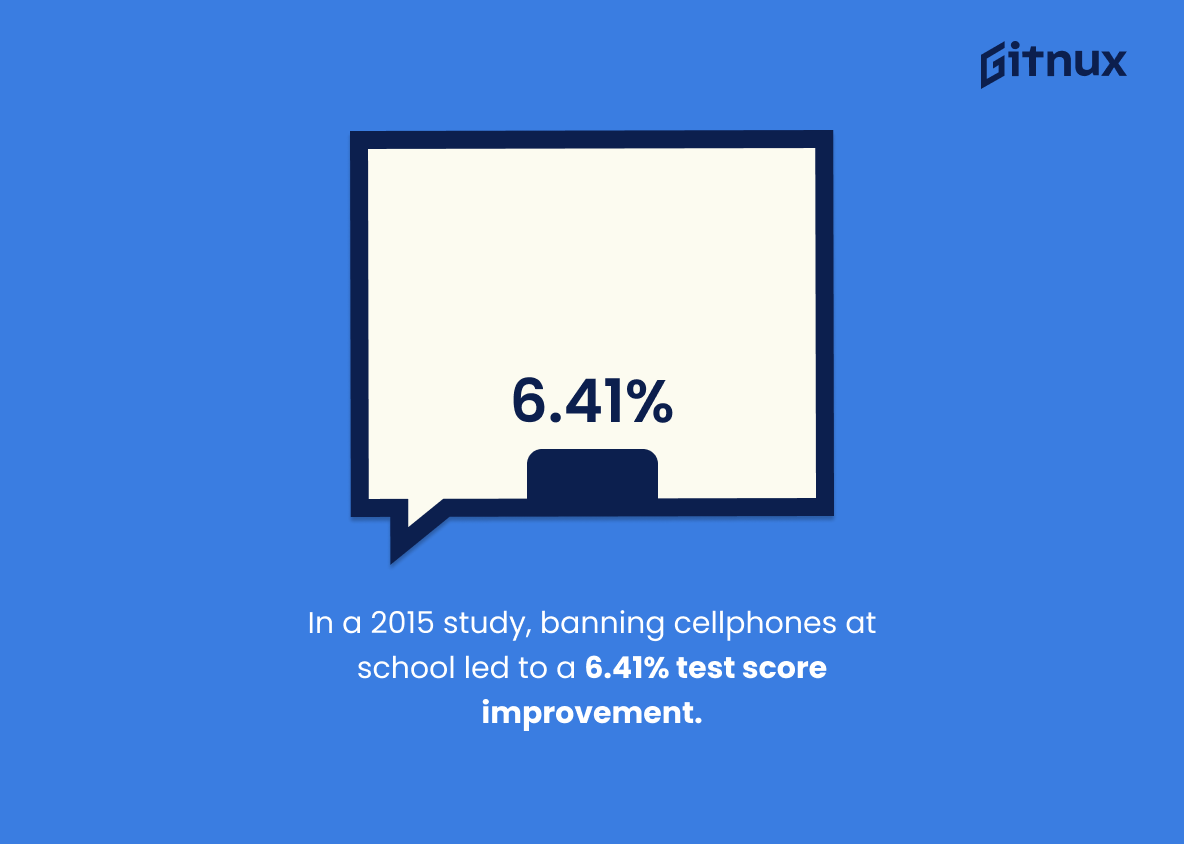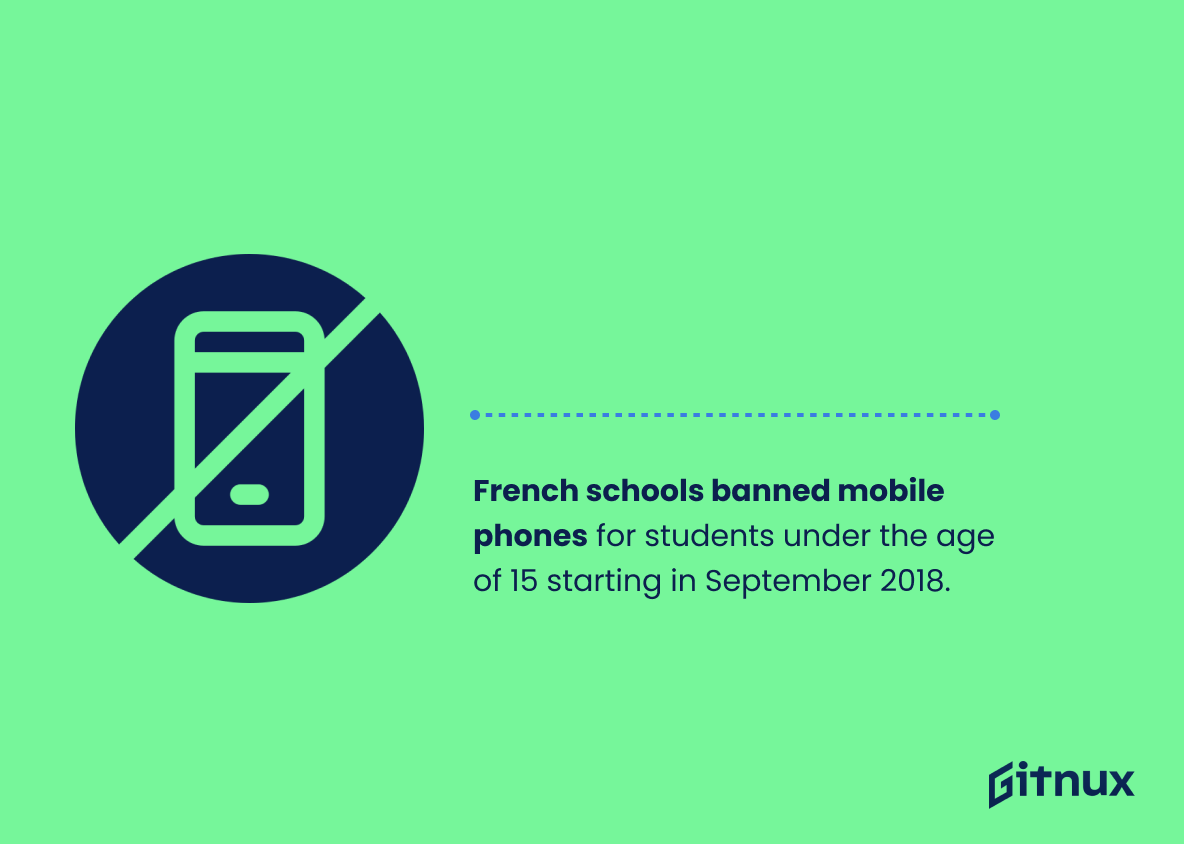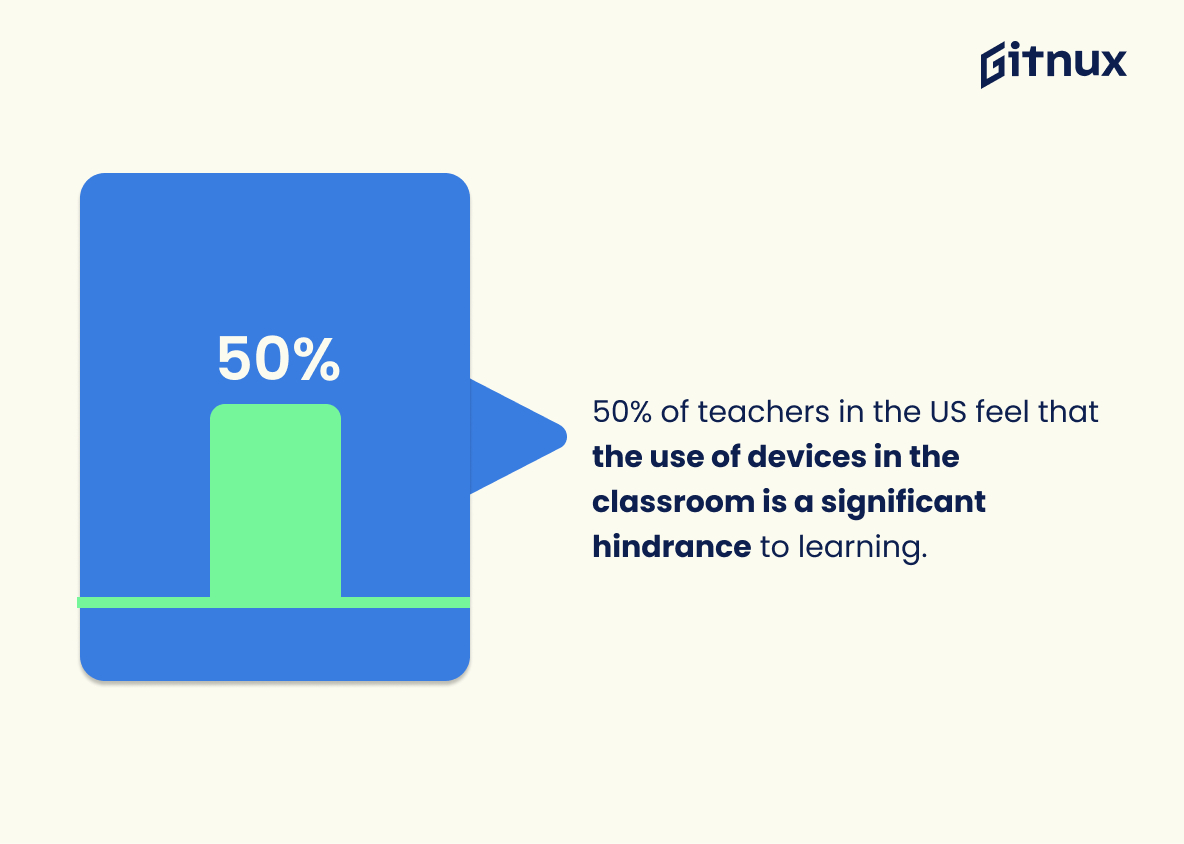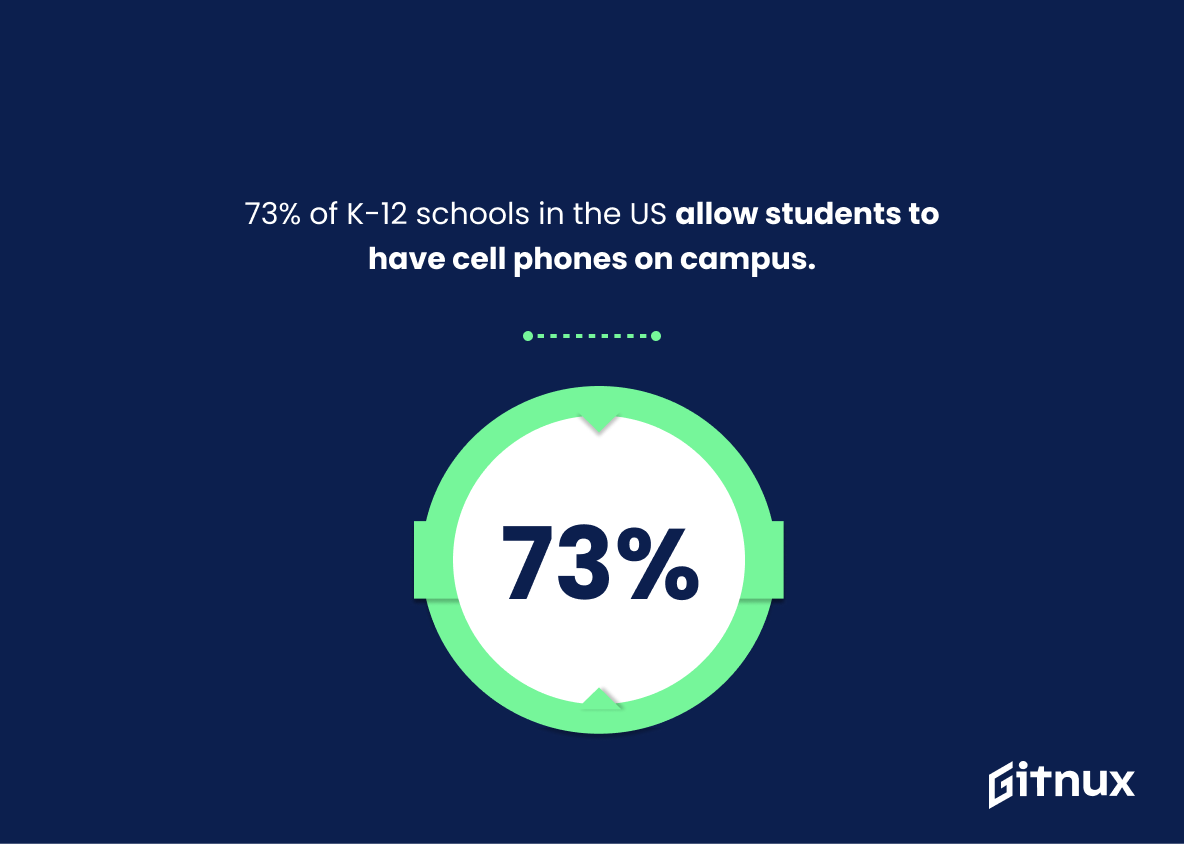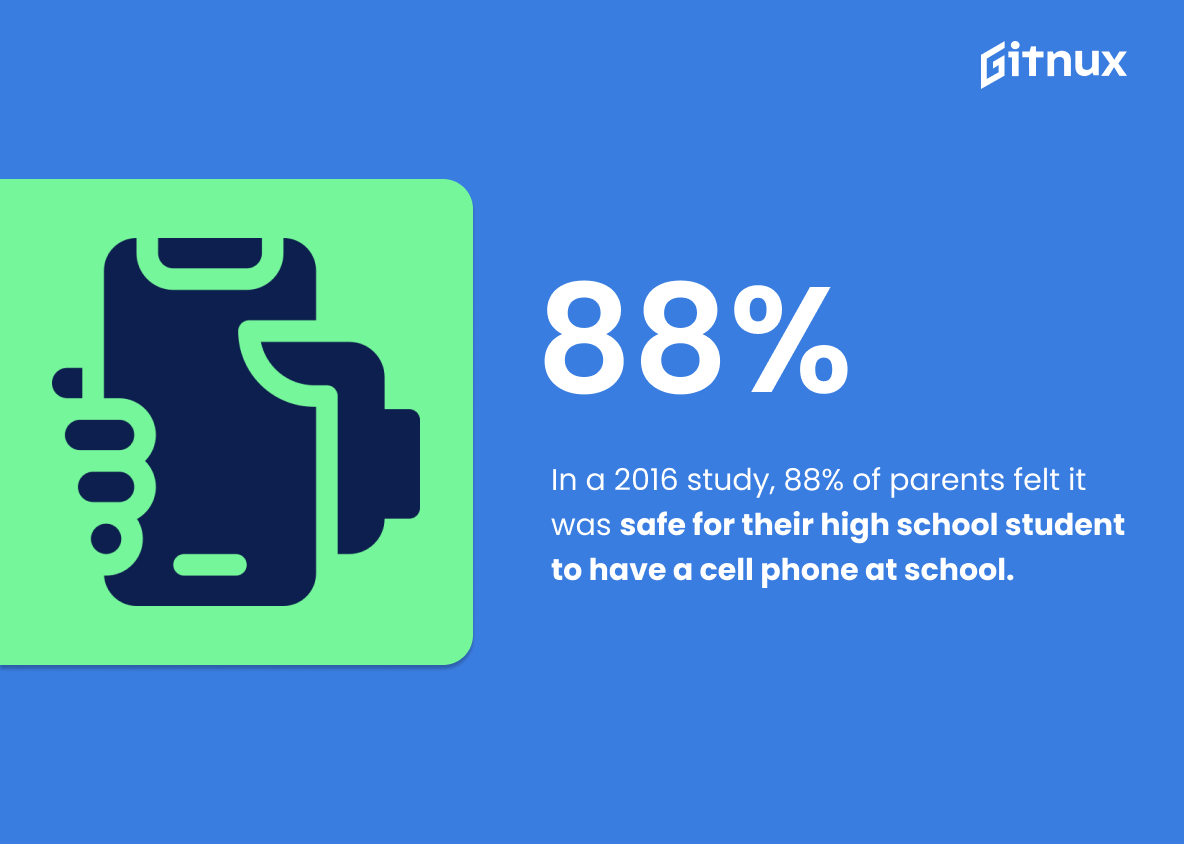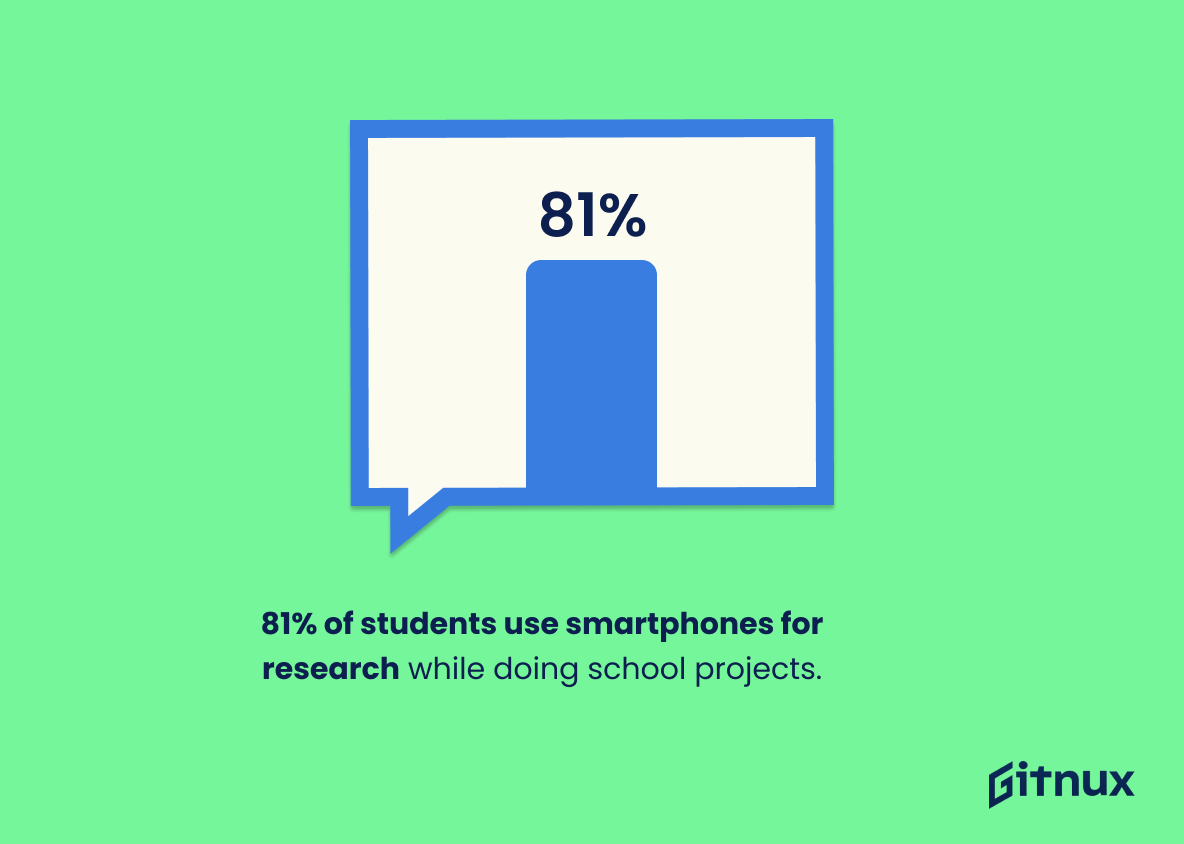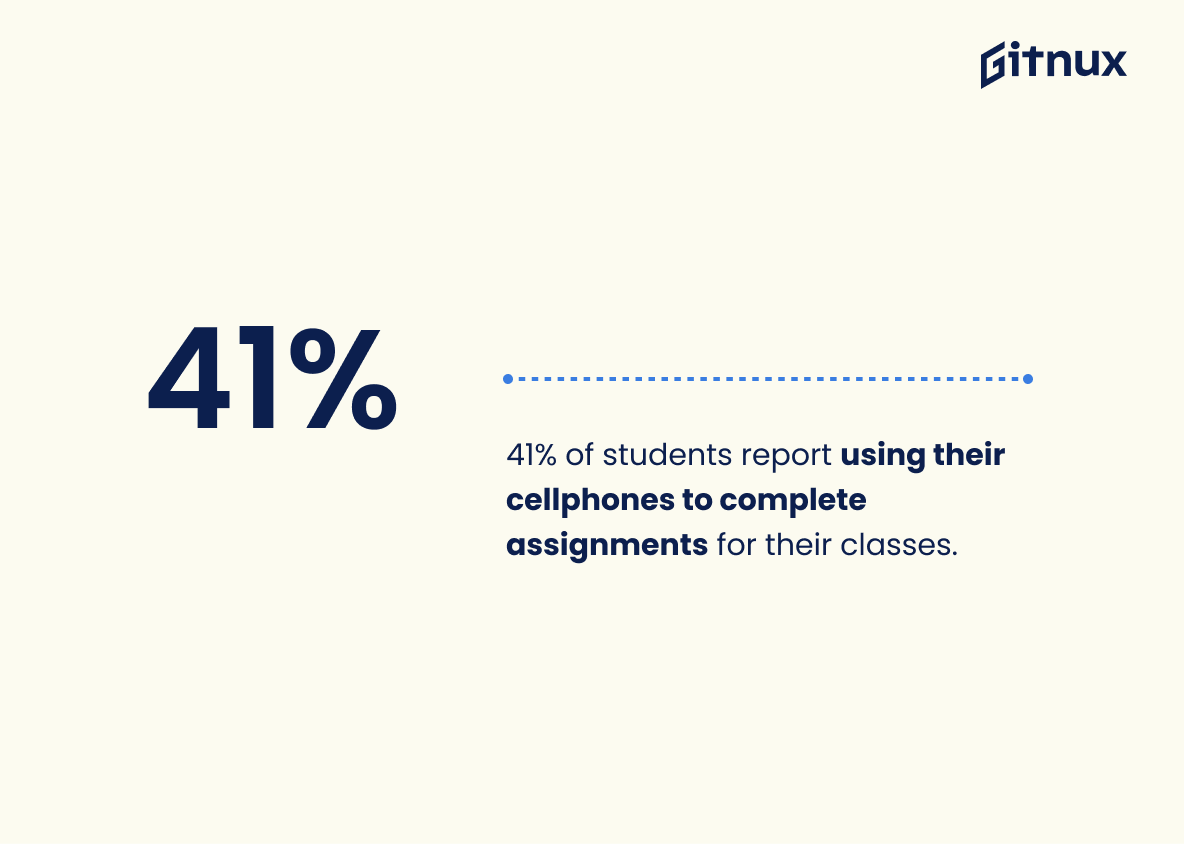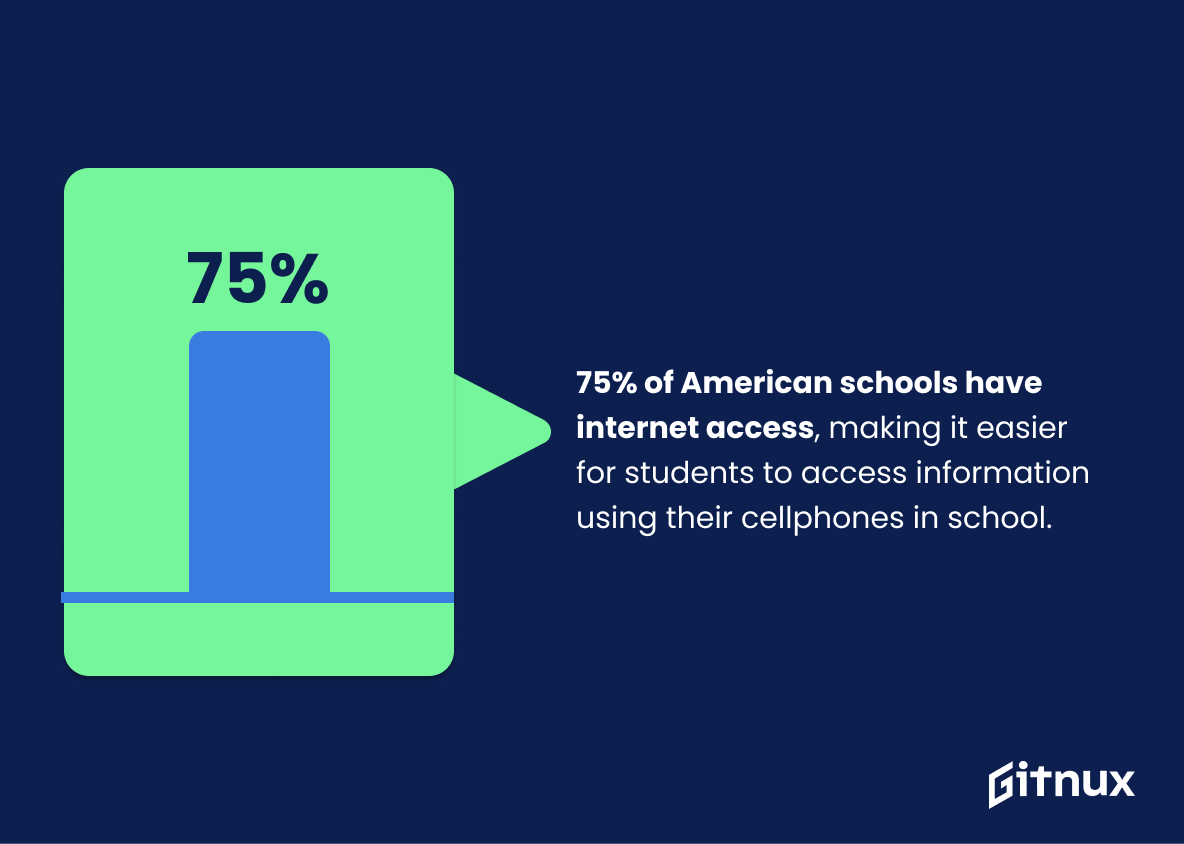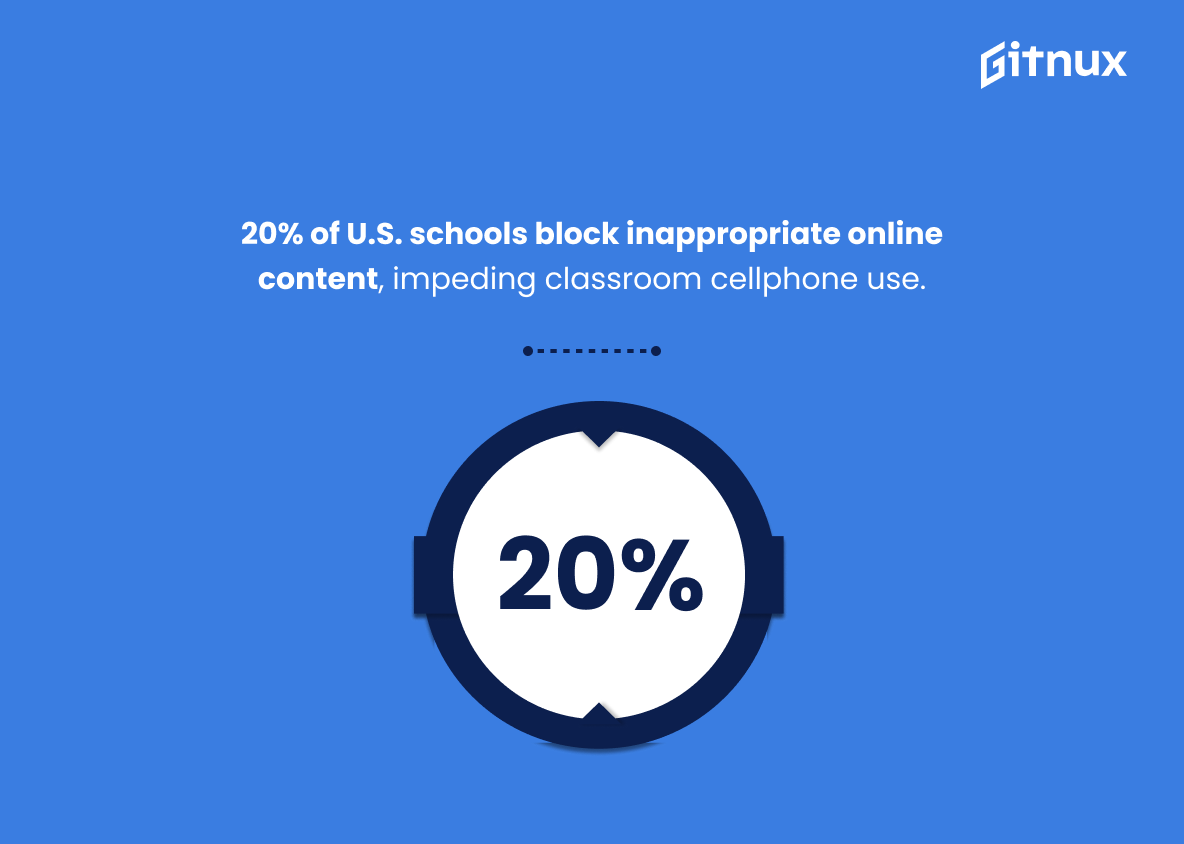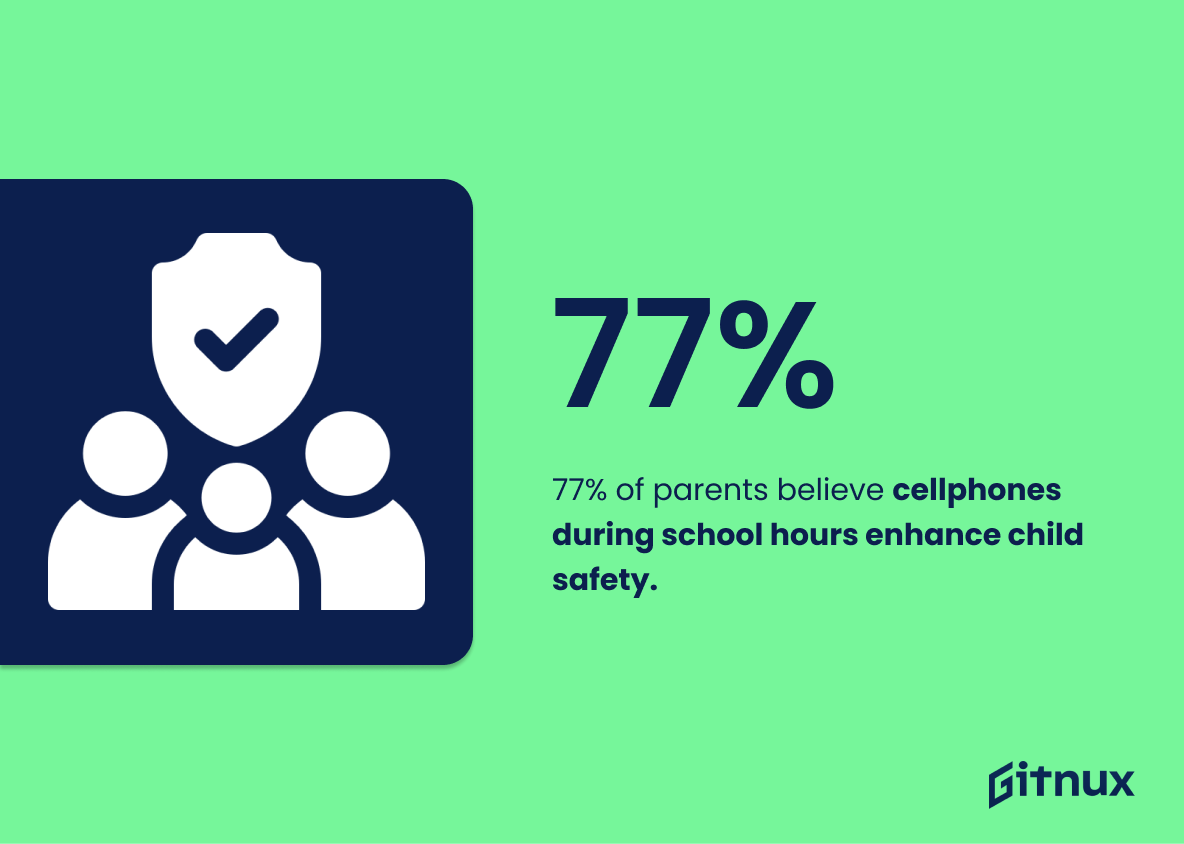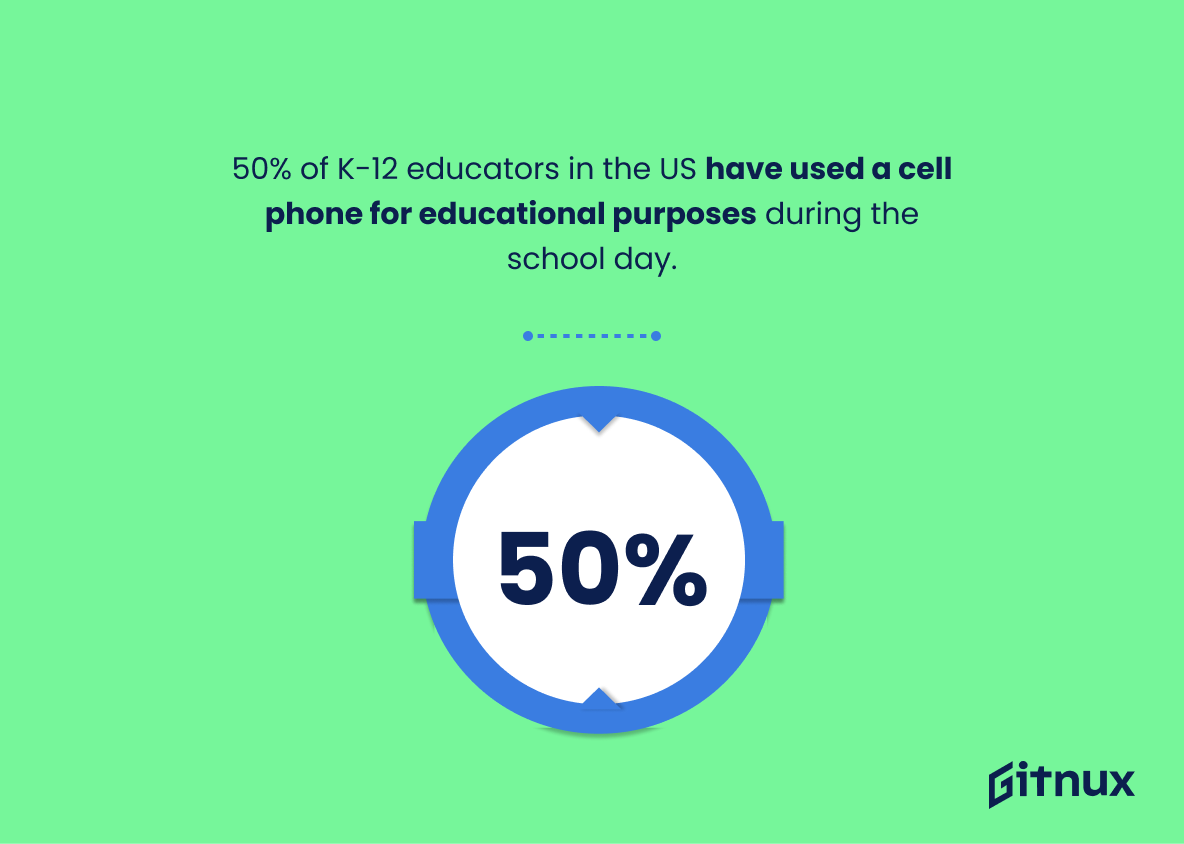Cellphones have become an integral part of our lives, and their presence in the classroom is no exception. With 95% of American teenagers owning a cellphone, it’s not surprising that over 30% admit to using them during class for activities such as texting, listening to music or playing games. As schools grapple with how best to manage cell phone usage among students, statistics can provide insight into the impact they are having on learning outcomes.
This blog post will explore various statistics related to cell phones in school settings around the world. We’ll look at data from countries like France which has banned mobile phones for students under 15 years old; US K-12 schools where 73% allow student access; and studies showing improvements in test scores when devices were restricted during school hours. Additionally we’ll examine surveys about parent attitudes towards device use by high schoolers; teacher opinions regarding technology integration within classrooms; and student habits including taking pictures/videos for assignments or researching online while at school. Finally we’ll discuss potential benefits associated with incorporating smartphones into lesson plans such as increased engagement levels amongst learners.
This statistic is a powerful indicator of the prevalence of cellphones in the lives of American teenagers. It demonstrates that cellphones are an integral part of the lives of the majority of teenagers, and thus, should be taken into consideration when discussing the potential implications of allowing cellphones in school.
Over 30% of teens admit to using their cellphones in class to text, to listen to music or play games.
This statistic is a telling indication of the prevalence of cellphones in the classroom, and serves as a reminder of the need for schools to address the issue of cellphone use in the classroom. It highlights the fact that, despite the potential for distraction, many students are still using their phones in class for activities other than educational purposes. This statistic is an important piece of information for anyone looking to understand the current state of cellphone use in the classroom, and is an important factor to consider when discussing the potential benefits and drawbacks of allowing cellphones in school.
Cellphones In School Statistics Overview
47% of students report a decrease in their phone usage after their school implemented a phone ban.
This statistic is a powerful indicator of the effectiveness of cellphone bans in schools. It shows that when schools implement a ban on cellphones, students are more likely to reduce their phone usage, which can lead to improved academic performance and fewer distractions in the classroom. This statistic is an important piece of evidence that supports the idea that cellphone bans can be beneficial for students.
In a 2015 study, students who were not allowed to use cellphones during school hours experienced a 6.41% improvement in test scores.
This statistic is a powerful testament to the impact that cellphones can have on student performance. It shows that when students are not allowed to use their phones during school hours, their test scores improve significantly. This is an important piece of evidence that can be used to support the argument that cellphones should be restricted in the classroom in order to maximize student learning.
French schools banned mobile phones for students under the age of 15 starting in September 2018.
This statistic is a powerful reminder of the impact that cellphones can have on students’ learning and development. It highlights the importance of limiting students’ access to cellphones in order to ensure that they are able to focus on their studies and not be distracted by their devices. This statistic is a great example of how governments and schools are taking action to ensure that students are able to get the most out of their education.
50% of teachers in the US feel that the use of devices in the classroom is a significant hindrance to learning.
This statistic is a powerful indicator of the impact that devices can have on learning in the classroom. It suggests that half of teachers in the US believe that the use of devices is a major obstacle to students’ education, and thus should be taken into consideration when discussing the use of cellphones in school.
73% of K-12 schools in the US allow students to have cell phones on campus.
This statistic is significant in the context of a blog post about Cellphones In School Statistics because it demonstrates the widespread acceptance of cell phones in K-12 schools across the United States. It shows that the majority of schools are comfortable with students having access to their phones on campus, indicating that cell phones are becoming an increasingly accepted part of the educational experience.
In a 2016 study, 88% of parents said they thought it was safe for their high school student to have a cell phone at school.
This statistic is a powerful indicator of the changing attitudes towards cellphones in school. It shows that the majority of parents are now comfortable with their high school student having a cellphone at school, suggesting that the use of cellphones in school is becoming more accepted. This statistic is important to consider when discussing the impact of cellphones in school, as it demonstrates that the majority of parents are now comfortable with their children having access to a cellphone while at school.
81% of students use smartphones for research while doing school projects.
This statistic is a powerful indicator of the prevalence of smartphones in the educational setting. It demonstrates that the majority of students are utilizing their phones for research purposes, which speaks to the potential of mobile devices to be used as a tool for learning. This statistic is especially relevant in the context of a blog post about Cellphones In School Statistics, as it provides a concrete example of how cellphones are being used in the classroom.
41% of students report using their cellphones to complete assignments for their classes.
This statistic is a telling indication of the prevalence of cellphones in the classroom. It demonstrates that a significant portion of students are relying on their phones to complete their assignments, suggesting that cellphones are becoming an increasingly important tool for students in their academic pursuits.
75% of American schools have internet access, making it easier for students to access information using their cellphones in school.
This statistic is a testament to the fact that the majority of American schools are now equipped with internet access, allowing students to use their cellphones to access information in the classroom. This is a significant development, as it provides students with a powerful tool to enhance their learning experience. With the internet at their fingertips, students can quickly and easily access a wealth of information, from educational resources to research materials. This statistic is a clear indication that the use of cellphones in school is becoming increasingly commonplace, and that schools are taking steps to ensure that students have the resources they need to succeed.
20% of schools in the United States use software to block student access to inappropriate online content, limiting the effectiveness of classroom cell phone usage.
This statistic is a telling indication of the current state of affairs in the United States when it comes to the use of cell phones in the classroom. It highlights the fact that, despite the potential benefits of using cell phones in the classroom, many schools are still wary of the potential risks associated with unrestricted access to the internet. This statistic serves as a reminder that, while cell phones can be a useful tool in the classroom, there is still a need for caution and oversight when it comes to their use.
77% of parents think that having a cellphone on them during school hours is a safety measure for their children.
This statistic is a powerful indicator of the importance that parents place on the safety of their children. It shows that the majority of parents believe that having a cellphone on them during school hours is a necessary precaution to ensure their children’s safety. This statistic is important to consider when discussing the pros and cons of allowing cellphones in school, as it demonstrates the importance that parents place on the safety of their children.
40% of high school and middle school students use their cellphones during class to watch movies or TV shows.
This statistic is a telling indication of the prevalence of cell phone use in the classroom, and serves as a reminder of the need for educators to address the issue of cell phone use in the classroom. It highlights the importance of having clear policies in place to ensure that students are not using their phones for activities that are not related to their studies. This statistic is also a reminder of the need for educators to be aware of the potential distractions that cell phones can bring to the classroom, and to be proactive in addressing this issue.
60% of students will complete notes using their cell phones.
This statistic is indicative of the prevalence of cell phones in the classroom, demonstrating that the majority of students are utilizing their phones for educational purposes. It is a testament to the fact that cell phones are no longer seen as a distraction, but rather as a tool for learning. This statistic is an important reminder that cell phones can be used to enhance the learning experience, and should not be seen as a hindrance.
Students spend an average of 20% of their in-class time on their cell phones during class.
This statistic serves as a stark reminder of the prevalence of cell phone usage in the classroom, and the potential impact it can have on student learning. It highlights the need for educators to be aware of the potential distractions that cell phones can cause, and to take steps to ensure that students are using their devices responsibly and not letting them interfere with their learning.
50% of K-12 educators in the US have used a cell phone for educational purposes during the school day.
This statistic is significant in the context of a blog post about Cellphones In School Statistics because it demonstrates the widespread adoption of cell phones as a tool for teaching and learning. It shows that educators are increasingly recognizing the potential of mobile devices to enhance the educational experience, and that they are willing to embrace the technology in their classrooms. This statistic is a testament to the power of mobile technology in the classroom, and it is an important reminder of the importance of staying up-to-date with the latest trends in education.
Nearly 2/3 of students who own cellphones admit to using them in school, even when not allowed.
This statistic is a telling indication of the prevalence of cellphones in the school environment. It shows that despite the rules and regulations in place, a large portion of students are still using their phones in school. This statistic is important to consider when discussing the impact of cellphones in the school setting, as it demonstrates the need for further measures to be taken in order to ensure that students are not using their phones in class.
Teachers who incorporate cellphones into their lesson plans have reported increased student engagement and participation.
This statistic is a powerful testament to the potential of cellphones in the classroom. It suggests that when used in the right way, cellphones can be a powerful tool for engaging students and encouraging them to participate in the learning process. This is an important point to make in a blog post about Cellphones In School Statistics, as it highlights the potential of this technology to improve the educational experience.
Conclusion
The statistics presented in this blog post demonstrate the prevalence of cellphones among American teenagers, as well as their use both inside and outside of school. While there are some potential drawbacks to allowing students to bring phones into classrooms, such as decreased focus or increased distraction, it is clear that many schools have found ways to incorporate them into lesson plans for educational purposes. Additionally, parents often view having a cellphone on hand during school hours as an important safety measure for their children. Ultimately, while each individual situation should be considered carefully when deciding whether or not to allow student access to cellphones in class, these statistics suggest that they can be used effectively if done so thoughtfully and with appropriate guidelines in place.
References
0. – https://www.educationpost.org
1. – https://www.screeneducation.org
2. – https://www.edweek.org
3. – https://www.nytimes.com
4. – https://www.ncpc.org
5. – https://www.perlmanclinic.com
6. – https://www.cep.lse.ac.uk
7. – https://www.escholarship.org
8. – https://www.bbc.com
9. – https://www.nea.org
10. – https://www.iste.org
11. – https://www.concordia.ca
12. – https://www.commonsensemedia.org
13. – https://www.pewresearch.org
14. – https://www.thejournal.com
15. – https://www.nces.ed.gov

